Snarly and Sumac are both drawn to kintsugi, in which broken ceramics are repaired in a way that the cracks are still visible. The fixed piece feels like a new, quirky, precious thing! To us, that’s a wonderful metaphor for apology. A good apology doesn’t pretend that the harm never happened. It doesn’t try to hide anything. It doesn’t rush to say, “let’s move on.” It takes time and attention to mend a fissure, but the result can be stronger, more individualized, and more exquisite than the original.
Kintsugi artist Naoko Fukumaru, whose pieces Snarly has long admired online, kindly consented to chat with SorryWatch about her work. Born in Kyoto, Naoko graduated from West Dean College in Chichester, England in 2000 with a masters in Ceramics and Glass Conservation and Restoration. She worked in traditional, invisible restoration for over two decades, helping to repair Leonardo da Vinci’s The Last Supper, the Tomb of Tutankhamun in Egypt, Auguste Rodin’s The Thinker, paintings by Caravaggio, murals by Diego Rivera and Yoko Ono, and Greek and Roman works in the Metropolitan Museum of Art in NYC. In the last few years, however, she’s focused on kintsugi. Here’s an edited transcript of our conversation.
SW: First, what is Kintsugi?
NF: It is the art of golden joinery. In Japan, we have been restoring ceramics and celebrating imperfection this way for over 500 years. People think kintsugi is glued with gold, but it’s not. Only the surface of the kintsugi has gold. It uses urushi lacquer, which is made from a kind of tree sap and can conserve things longer because it’s a protective material with antibacterial properties. It can stand heat and cold and acid and alkaline. It takes up to four weeks to cure. Our modern world is very speedy, with everything moving so fast. Instant glue, instant food, fast Internet. But kintsugi requires patience.
SW: What drew you to this practice?
NF: I am from a third-generation antique auction family. When I was a little child, I was always going to my father’s company because there were so many wonderful, mysterious objects. One day he was teaching me how to make a special box. I thought I did well but when he lifted the box my knot came apart and the plate inside smashed on the floor. I was very upset. But he didn’t blame me because he knew I did my best.
Many years later, when I started studying conservation of ceramics, he sent me a box with that plate inside. He said, ‘Use it as practice.’ I said, ‘I remember this plate!’ He had kept it for years and years. First, I restored the plate with hidden restoration, which I was learning, and then again later, with kintsugi. I think, “I don’t want to hide my mistakes because my father didn’t blame me, and he kept it, and sent it to me!” The story continues and continues.
When I was in school in England, my father told me for the first time that my great-grandfather went with a wheelbarrow to people’s houses receiving broken items. He was ashamed that his grandfather was a garbageman. But I was amazed when he told me this! I sometimes use a wheelbarrow in my work too.
SW: Why are you more drawn to damaged ceramics than other kinds of antiques?
NF: Compared to a painting, which we hang on a wall and look at, ceramics are something we use every day. We drink, we eat, we touch. It’s like family or a friend. And when it breaks, we are so sad — it’s like we broke a friend or family. I want to restore not only the physical ceramics, but also the hearts of people, because they get so broken. I also come back to my childhood, to my father rescuing broken ceramics; we used them every day at home. I grew up eating off beautiful ceramics with chips and cracks. I was fed baby food from broken Imari ceramics!
I’m not interested in complete ceramics. Everyone can appreciate complete ceramics! But if something is broken, people think it’s useless, the end of life. I love to put my love and care into something broken. I witness the process, and I witness people saying, ‘This is more beautiful than before.’ People ask for my work for apologies. I make people happier in the way that apologies do.
SW: You sent me a beautiful article you wrote for a local magazine in which you said, “Because Kintsugi does not hide damages, we can accept our mistakes and imperfections. People can overcome their traumas and sufferings when they realize they can find beauty in imperfection. Kintsugi teaches us how to forgive ourselves and others and how to make a better world by applying the Kintsugi philosophy to everyday life.”
NF: Broken ceramics are often the result of our mistakes. Kintsugi can switch negative feelings about mistakes to positive. When we say sorry —and not fake sorry! really deep sorry, from the heart! — we thank the mistake because it can make our relationship become much stronger.
SW: I love “we thank the mistake.” You also said, “Sometimes I metamorphose from a Kintsugi artist into a ceramic therapist transforming trauma into beauty with Kintsugi.”
NF: People are traumatized often, coming to me: “This was my great-grandfather’s; this was a family treasure…” and they’re nearly crying. And when I fix it, they say this is magic!
Witnessing transformation and overcoming trauma is healing for me. Damage and breaking things, it’s normal. Everyone has trauma. People try to pretend they’re OK — there’s so much pressure on us to pretend we are OK! — or pretend nothing happened, but we can find beauty in what is broken. It’s not just overcoming; it’s making beauty from how we’re hurt or different. We can apply kintsugi in our lives, asking, ‘how can I make this relationship stronger? How can I apologize?’
SW: It’s also important to note that some things can’t be fixed. We talk about this at SorryWatch – the pressure to forgive can be so harmful. Not everything is forgivable. Has kintsugi helped you think about when something can be fixed and when it can’t, in life as well as in art?
NF: I tried for 20 years to fix my relationship. I lived with domestic violence. A year after I arrived in Canada, I was evacuated to a women’s shelter. But I’m not regretting. I did my best. I have two children. That makes things harder. What I would really regret is if I never tried.
SW: You recently had a huge kintsugi exhibit called “Imperfect Offerings.”
NF: In the summer of 2021, at Richmond Art Gallery, I created the largest Kintsugi exhibition ever in North America. There were over 200 works, some traditional ceramics but some very different works using local materials from where I live. Sea urchins from the Okeover Inlet, barnacles and blackberry thorns from Divers Rock in Lund, crab shells from Thunder Bay, forest mushrooms, a rock from Gibsons Beach, an egg from Save-On-Foods.
SW: These works are so beautiful, but I see a lot of humor there too.
NF: Yes! Humor is so important!
SW: Tell SorryWatch readers the cat story!
NF: The story is that my friend found a sea urchin shell in the ocean, and it was broken in three pieces, and I asked to use it for a kintsugi experiment, the first time I tried using kintsugi with natural materials. He said yes, so I brought the three pieces home and put them on my shelf. During the night my two cats decided to eat them. In the morning, I found fragments all over on the floor and some parts were missing. Because they ate them. I was very sad. But after I started applying kintsugi I found they were more beautiful, and I could apply stitching work to the missing part they ate, and we can see the beautiful structure inside because parts are missing.” That is my collaboration with cats. If they didn’t eat it, the piece wouldn’t have become that beautiful.
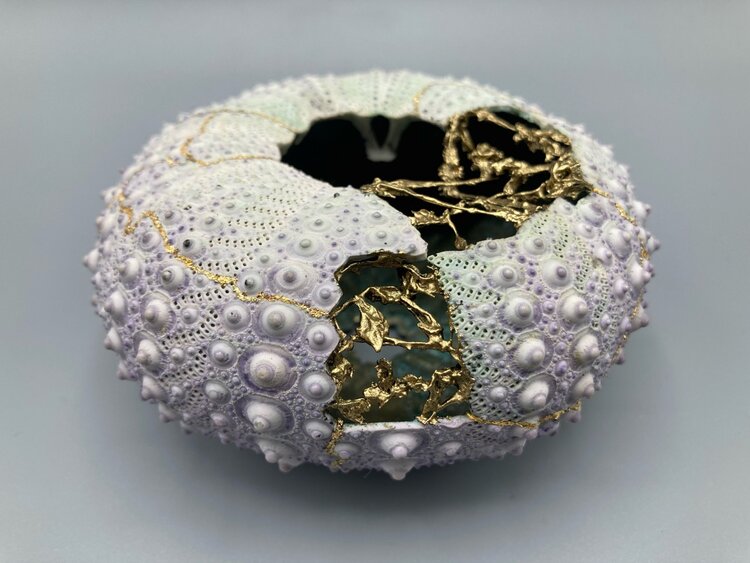
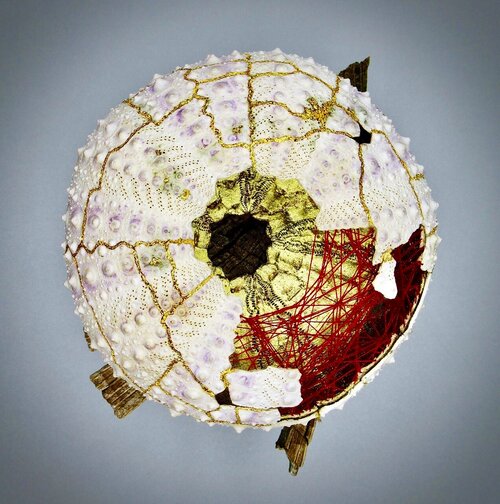
SW: You actually asked the first question in this interview, not me. You asked how to say my name and what it means. I told you that “Marjorie” literally means “pearl” – originally from the Hebrew Margalit. But I think your name is much more meaningful.
NF: My first name, “Naoko”: “Nao” means cure, heal, fix, restore, and “ko” means child or woman. My last name, “Fukumaru”: Fuku” means good fortune and “maru” means circle. I am a woman who restores good fortune to the world. I want to continue to connect fragments, people, and the world.
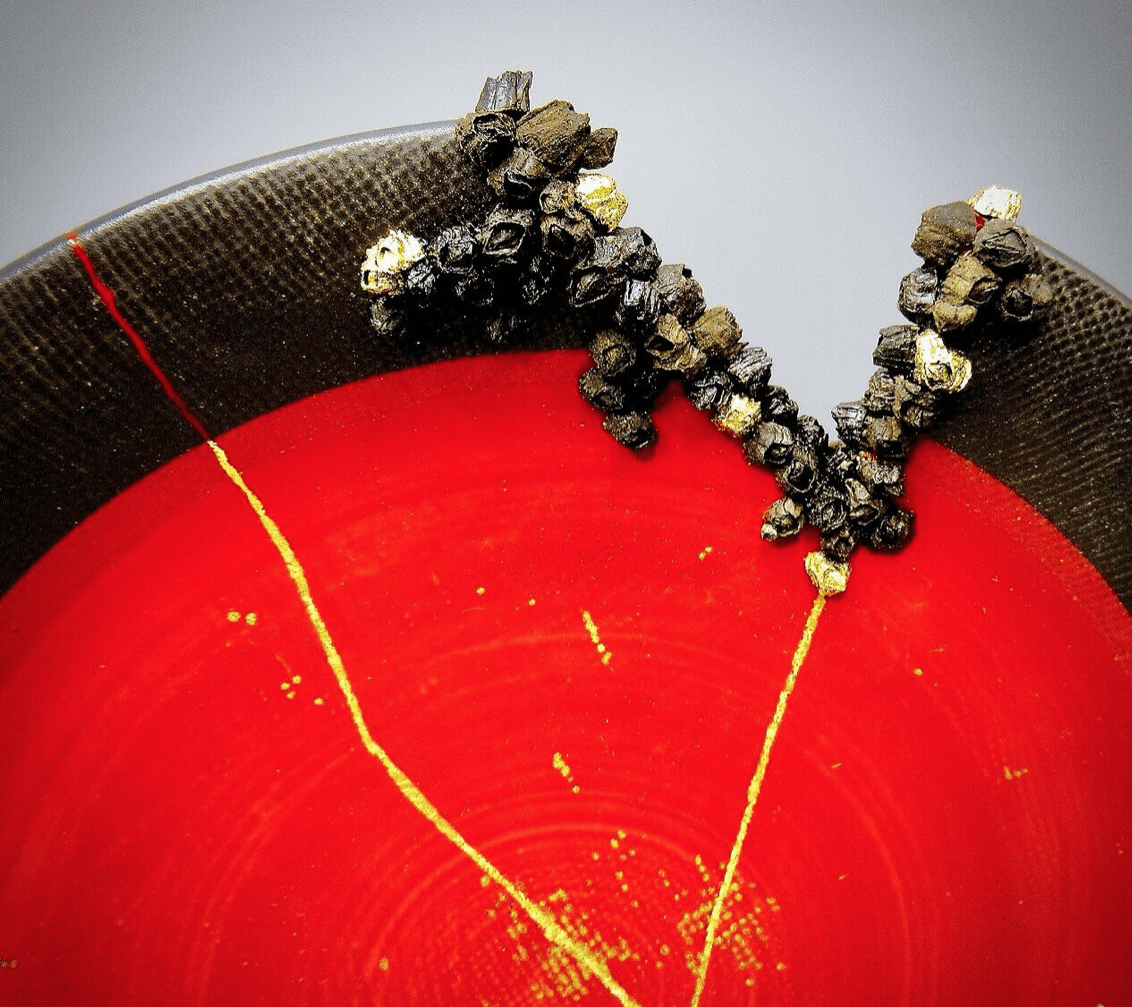
Image Credits: Images copyright Naoko Fukumaru, used with permission
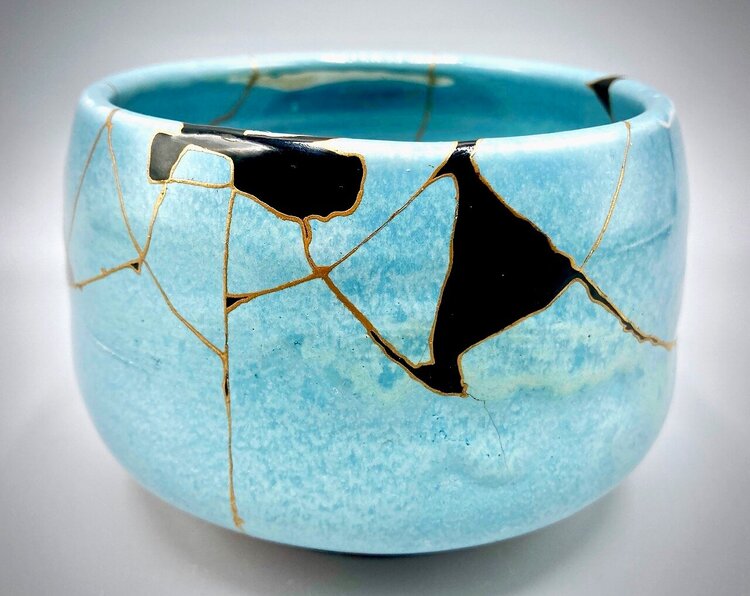
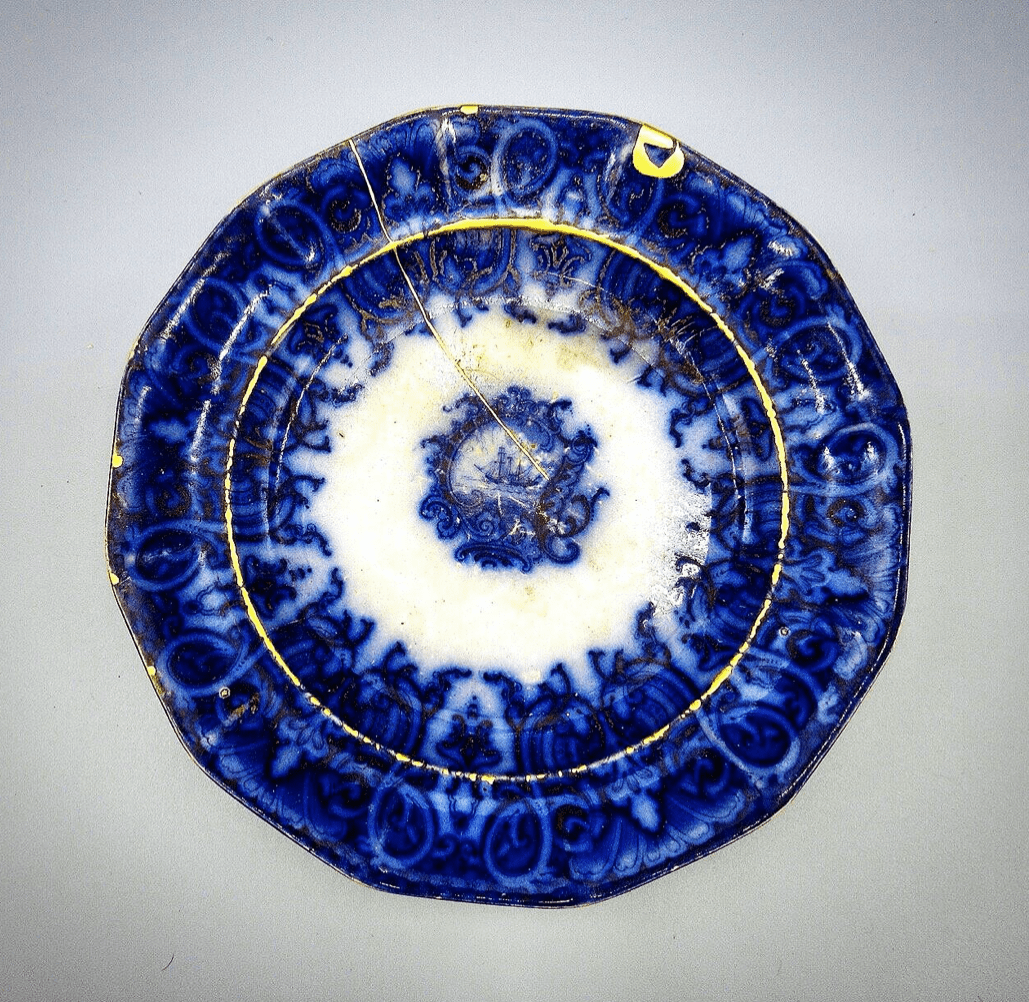
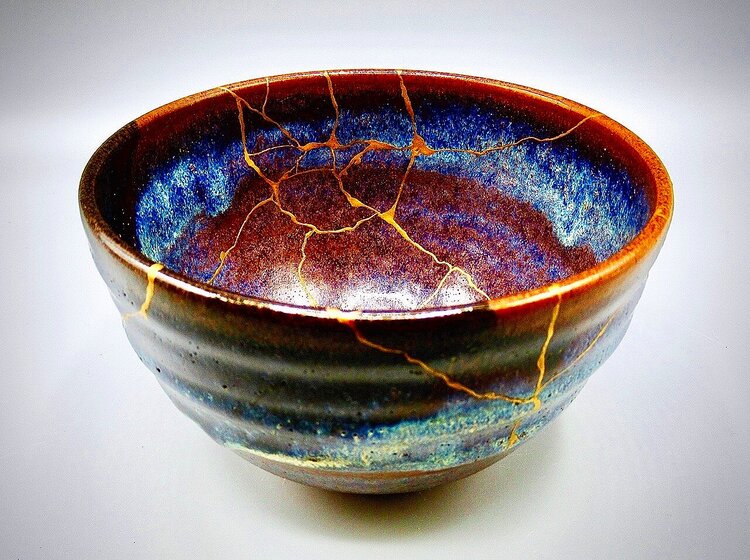
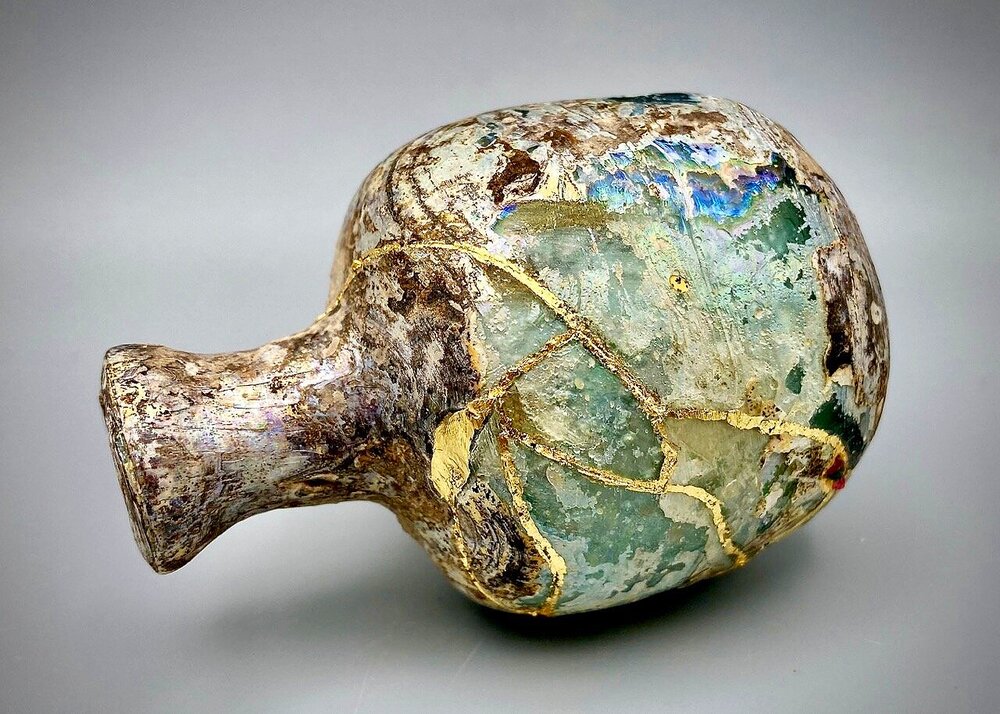
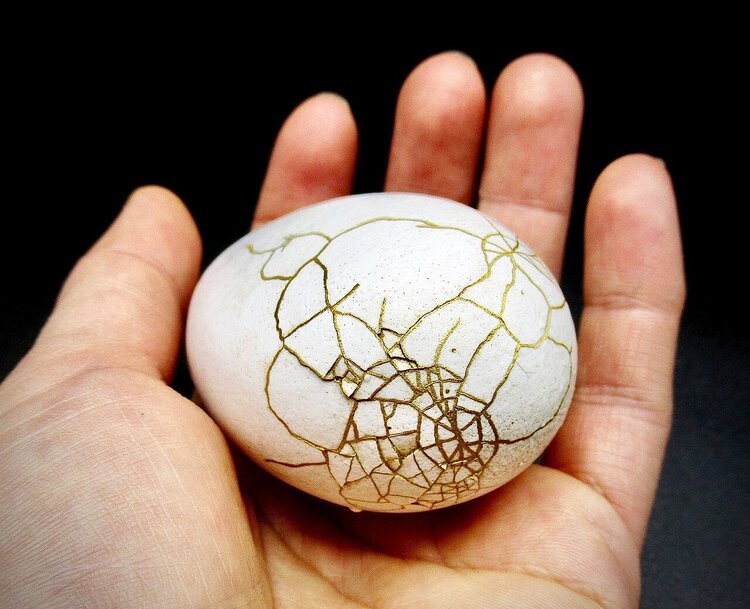

intriguing and wonderful ~ love her story of the broken plate that her father kept
Wonderful. I sign my pieces Nao, short for Naomi–restoring myself through pottery, perhaps?
This is just so beautiful – especially the meditation on imperfection her father provided by holding onto that plate – precious even though broken – and allowing her to restore it. I aspire to that mastery of forgiveness.
Also, I am going to spend a terrible amount of money on some Kintsugi someday.
There is a documentary film, as shown on NHK world, showing the process of Kintsugi, the waiting, the polishing, the serving, the spirit, but mostly the patience it takes; as it gives, so to speak.
Gorgeous! The writing, the kintsugi, and the connection.